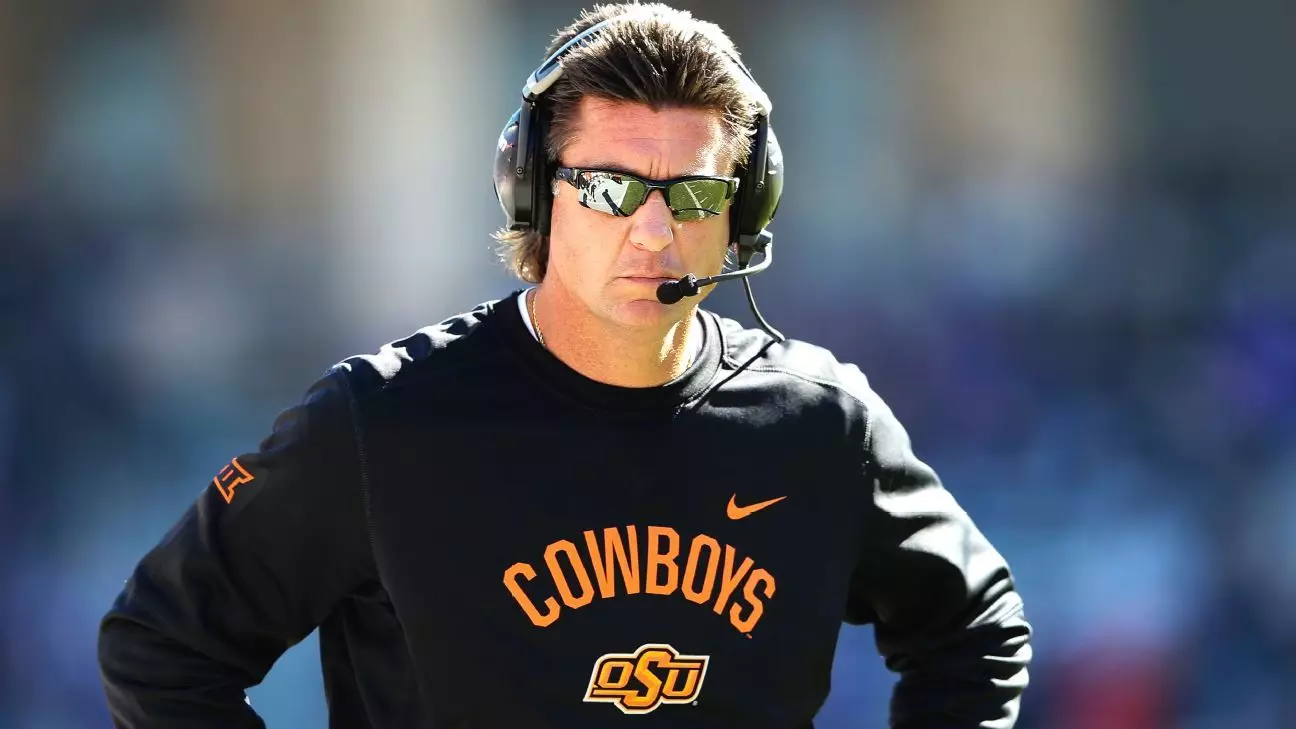In the ever-evolving landscape of college sports, retaining a head coach often becomes a balancing act of performance, loyalty, and financial considerations. Oklahoma State University found itself at the intersection of these factors with their football program this past weekend, culminating in a critical decision regarding the future of head coach Mike Gundy. While Gundy is known for his longstanding affiliation with the Cowboys—having served as their head coach since 2004—the recent challenges faced by the team raised questions among regents and stakeholders about the viability of continuing this partnership.
The pivotal conversations about Gundy’s contract arose during a special meeting convened by the Oklahoma A&M Board of Regents. With the team’s abysmal 3-9 record last season—its worst performance under Gundy—coupled with a pervasive winless streak in the conference, discussions about the coaching staff’s future were fraught with tension. While the implications of a coaching change could be significant, the Board remained divided on the path forward; some members expressed a desire to retain Gundy, while others suggested a fresh start.
As part of the negotiations to keep Gundy at the helm, a fascinating financial restructuring took place. Sources reveal that Gundy agreed to a reduction in his annual salary of $7.75 million, the largest in the Big 12 Conference. This cut is reportedly intended to facilitate a system of revenue sharing among athletes, reflecting a broader trend in college athletics which aims to provide players with a more equitable share of the profits generated by their respective programs.
Interestingly, the restructuring also included a significant reduction of Gundy’s buyout clause, which could have posed a financial burden on the university. This aspect is particularly compelling as it reinforces the idea that both sides were willing to make sacrifices to reach an amicable resolution. However, the road to this agreement was not without its roadblocks. Initial disagreements about the extent of Gundy’s salary reduction led to a tense couple of days, leaving uncertainty hanging over the coach’s future.
Behind the scenes, the support for Gundy from influential figures within the university’s administration likely played a crucial role in retaining him. School president Kayse Shrum and athletic director Chad Weiberg voiced their backing of Gundy, reinforcing a sentiment that the coach’s past successes were a testament to his capabilities. However, dissenting opinions within the Board of Regents reflect a broader narrative in college athletics; the pressure to deliver consistent results can overshadow loyalty and long-term planning.
Gundy’s history with Oklahoma State is impressive, marked by a record of 169-88 and multiple accolades, including three Big 12 Coach of the Year titles. These accomplishments, which led to numerous bowl appearances, make the current situation all the more perplexing. The University is left to ponder the nature of success—whether a storied career can eclipse a single dismal season, and how much faith should be placed in a coach’s ability to restore a program’s competitiveness.
Gundy’s continuation as head coach signifies more than just a contract agreement; it speaks to the complexity of athletic leadership in an era where public scrutiny and financial realities collide. As the dust settles from the recent negotiations, eyes will inevitably turn towards Gundy’s approach to rebuilding the team.
The dismissal of key coaching personnel, such as offensive coordinator Kasey Dunn and defensive coordinator Bryan Nardo, signals Gundy’s recognition of the need for transformation. New hires will be critical in redefining team strategies and revitalizing the program’s trajectory. With recent underperformance now juxtaposed against the backdrop of a robust football history, Gundy faces an uphill battle to regain the faith of fans and alumni alike.
In the landscape of college football, where loyalty, performance, and funding play pivotal roles, Gundy’s ability to adapt and innovate will determine whether his legacy at Oklahoma State remains a story of continued success or leads to an inevitable conclusion of parting ways. The university and its stakeholders are looking to the future with cautious optimism, hoping that this new chapter is marked by resilience and renewed achievements on the field.


Leave a Reply